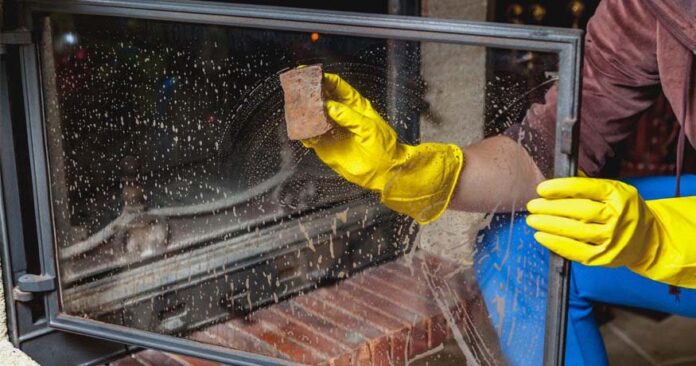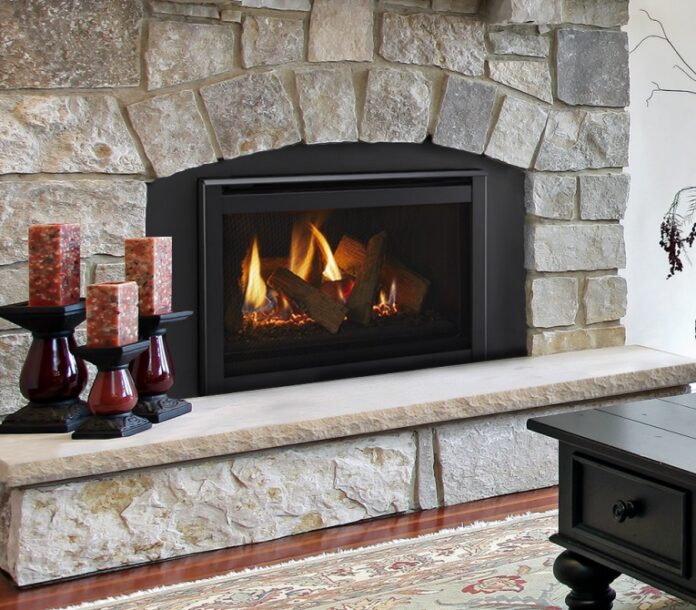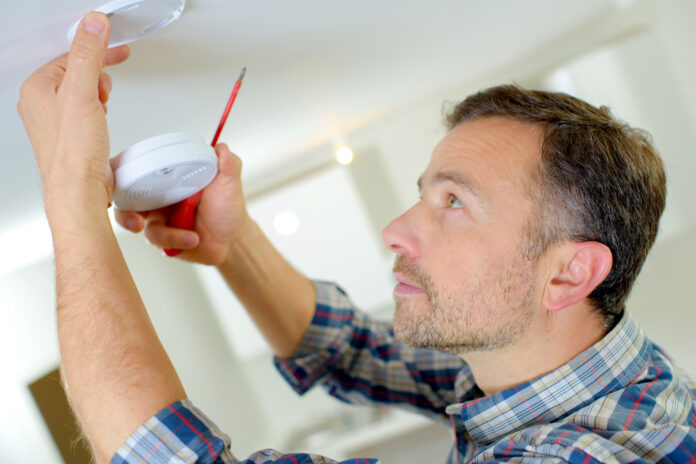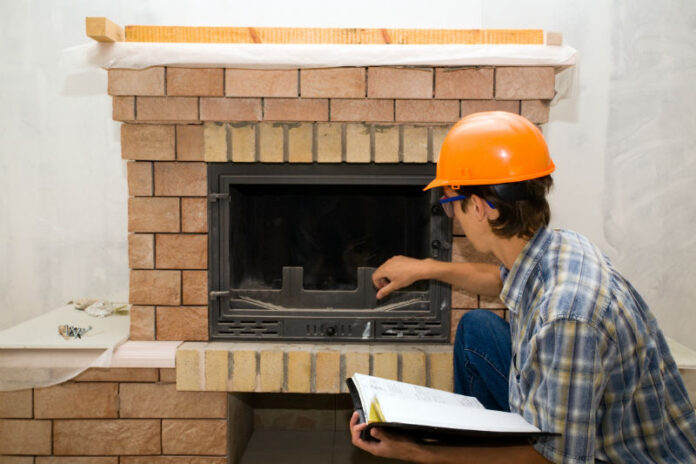Many homeowners expect to perform maintenance on a traditional wood-burning fireplace, but what about a gas insert fireplace, like those featured here? Yep, you need to do maintenance on them, too!
But don’t worry, we have some fantastic tips below, so you know what to do to keep your gas insert fireplace in top condition.
Clean The Glass

When you get your new gas insert product, you’ll enjoy a beautiful, crystal clear view of your cozy fire. But if you don’t clean the glass regularly, the glass will become clouded with residue from the gas flame.
Fortunately, most fireplace doors on gas fireplaces are a breeze to remove for convenient cleaning. Your owner’s manual should have instructions for removing the doors on your model.
Generally, remove the doors and put newspaper on your table to protect it. Wipe the inside and outside of the doors with a soft cloth and window cleaner. If there are dark spots that won’t come off, try ceramic stovetop cleaner and wipe away the residue with another fabric.
Dry the glass thoroughly with several paper towels. Replace the doors but wait 30 minutes to light the fireplace, so the window cleaner evaporates.
Check Ignition
One of the issues that can crop up over time is the gas ignition to malfunction. When you clean the fireplace, test the interior gas igniter under the log and ensure that it works right.
Do this by shutting off the gas and cleaning the ports and valves under the fireplace logs. You can rub them with a small piece of steel wool or fine sandpaper. Also, look for gas leaks; that familiar smell is a giveaway. But to be sure, rub some soapy water over the gas lines, ports and valves and look for tiny bubbles.
If you suspect a gas leak, shut off the emergency valve immediately and call a professional.
Clean The Interior

With a wand attachment from your vacuum, suck out debris and dust from the inside of the insert. If there are lava rocks inside that can be sucked out with the vacuum, protect the opening of the wand with a cheesecloth or stocking and hold it on with a rubber band. This will make a filter that allows dust and dirt to enter but not your rocks.
Clean The Logs
Most gas logs don’t need maintenance or cleaning, but if you see soot build up on the logs, check your owner’s manual for how to take them out. Take the logs outside and gently remove the soot from the logs with a brush. Don’t get water or cleaners on the lobs because that can ruin the finish.
Note that you shouldn’t remove vent-free gas logs on your own; this needs to be done by a professional to ensure safety.
Check Ventilation
If your gas fireplace is vented to the outside, it’s vital to make sure the vent is working right. It’s critical to check the vent at least once per year to ensure there is no blockage; if that happens, deadly carbon monoxide could seep into your home. And you may never know it until something tragic happens.
Inspect Carbon Monoxide Detectors

The last thing you need with a gas fireplace is carbon monoxide leaking into the home, which can be fatal. But carbon monoxide is odorless and invisible, so you need to have two or three carbon monoxide detectors in the house. Have one near the fireplace, at least, and at least another upstairs.
Check their batteries every year when you inspect your fire detectors.
Replace The Batteries
Many times, homeowners think their gas insert fireplace isn’t working anymore. All that needs to be replaced are the batteries. When you replace the batteries in your smoke detector two times per year, replace your fireplace batteries. If you ever need to turn off the fireplace fast, you’ll be happy to know you have new batteries.
Schedule Inspections

You should have the gas fireplace, and vent or chimney inspected annually. If your fireplace is vent-free, there’s no vent or chimney, but you should have it checked by a qualified professional.
If you do all of the above, your fireplace should give you years of services without problems!
Problems With DIY Gas Fireplace Installations
But what if you just got your fireplace and you want to install it yourself? Beware of these problems:
- Sizing problems: This should be easy to avoid, but sometimes homeowners don’t measure the space correctly. You need to be sure that you have the right-sized unit for your area. If it’s too small, you need to build around it, but you need to send it back if it’s too big.
- Not knowing the fireplace: If you’re putting a gas insert into a traditional fireplace, you need to know that fireplace from your flue to the chimney. If the fire is made too far forward, you will have smoke in your house!
- Gaps around the fireplace opening: Sometimes, the hearth won’t extend up to the opening of the fireplace, which leaves an annoying gap that can cause smoke problems.
When Do You Need Fireplace Professional?

How often you need a service call for your gas fireplace varies based on how much you use it. If you enjoy a fire from October to March, you could need service every year. But if you use it only every few weeks, you can probably have it checked every two years.
It’s crucial never to neglect gas fireplace maintenance; between gas leaks and carbon monoxide poisoning, a malfunctioning gas fireplace can endanger health. These problems are rare, but regular maintenance ensures your family remains safe.
Having a gas fireplace insert is delightful. You can have a roaring fire any time you wish with the flick of a switch. These wonderful fireplaces are fuel-efficient, clean-burning, and help reduce your central heating bill. All you need to do is do some simple regular maintenance, and you’ll enjoy years of delightful memories before your fireplace with your family.






